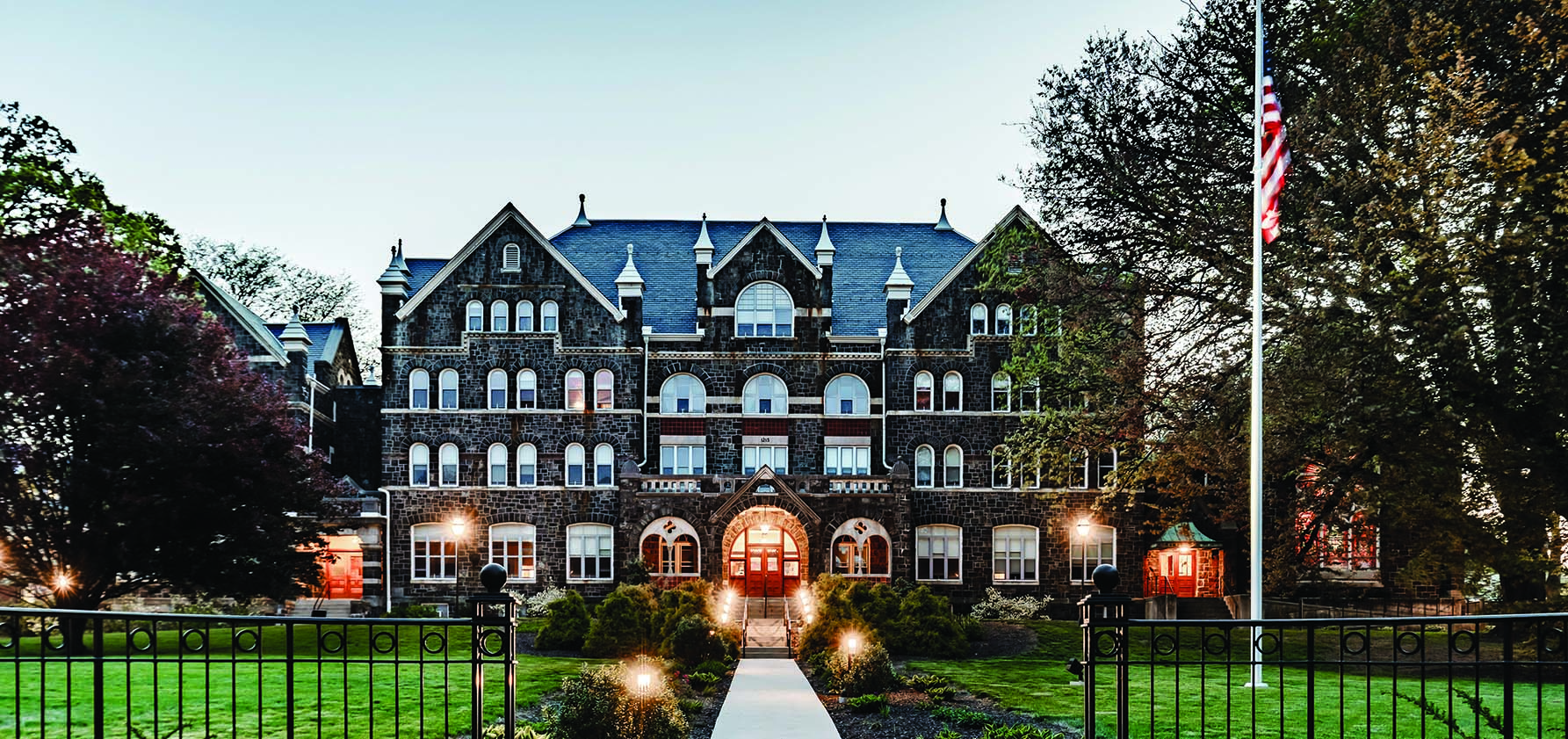
What better way to establish a fund for sustainability projects than with capital that sustains itself?
The Moravian College Greenhound Fund got its start in 2015 with combined contributions, from alum Jon Soden ’91 and his parents along with the college’s budgetary reserves accumulated from a few years of low energy costs. The concept of the fund was developed by then chairs of the Moravian College Sustainability Committee, Frank Kuserk, biology professor, and Mark Reed, chief financial officer. It works like this: Dollars are drawn from the fund to pay for campus projects designed to have a positive impact on the environment as well as the college’s budget, and the savings accumulated over time pay back the money spent.
Consider the first project: The 100-watt lights in all 210 lampposts on campus were replaced with 30-watt LED lamps. “Over the course of a year, we reduced our energy use by 99,338,400 watts [equivalent to the average amount of electricity consumed by 13,245 households in the United States each year]*,” reports Chad Royer, associate director, utilities and infrastructure, “which translates to an energy savings for the college of $7,947 per year.” Given an initial outlay of $26, 813, the project paid for itself in 3.4 years—by the close of the 2019–20 fiscal year. Since the lamppost refresh, several other energy-saving projects have been completed under the Greenhound Fund.
Colonial Hall
The lights in the Colonial Hall stairwells were upgraded with motion sensors, which eliminated unnecessary energy-gobbling continuous lighting.
Annual energy savings: 38,640,000 Watts (equivalent to the annual electricity needs of 5,152 average homes)
Annual savings in energy costs: $3,901
Payback: This upgrade paid for itself at the end of the 2020–21 fiscal year.
Parking Lot and Monument Lighting
Thirty 400-watt bulbs used to light campus parking lots and monuments were replaced with 28 86-watt and 2 101-watt bulbs.
Annual energy savings: 41,016,000 Watts (equivalent to the annual electricity needs of 5,469 average homes)
Annual savings in energy costs: $3,281
Payback: 7 years; this project will have paid for itself in the 2023–24 fiscal year
At the HILL
To eliminate continuous lighting and provide more efficient lighting in the stairwells in the HILL, the facilities department replaced 48 fixtures with LEDs equipped with ultrasonic sensors to detect motion.
Annual energy savings: 41,162,000 Watts (equivalent to the annual electricity needs of 5,488 average homes)
Annual savings in energy costs: $3,533
Payback: 4 years; this upgrade paid for itself in fiscal year 2021–22
Breidegam and Johnston Hall Retrofit
The most recent project approved by the sustainability committee and implemented by the facilities department was the most expensive at $48,092 but produces the greatest energy savings. In the Breidegam Fieldhouse and Johnston Hall, 240 367-watt lamps were replaced with 370 LED 75-watt lamps.
Annual energy savings: 178,030,000 Watts (equivalent to the annual electricity needs of 23,737 average homes)
Annual savings in energy costs: $14,228
Payback: 3.4 years; the retrofit will have paid for itself in fiscal year 2023–24.
The total in annual energy savings from these five projects is 398,186,400 Watts, equal to the average amount of energy used by 53,092 households annually.
The economic beauty of the Greenhound Fund, of course, is that once a project is paid for, the energy savings and cost savings continue for years.
You can help advance this important work by making a gift to the Greenhound Fund 2022.
It’s the gift that keeps on giving.
* Assuming 7,500 watts to power basic items in an average size house. (homelite.com; lcec.net)